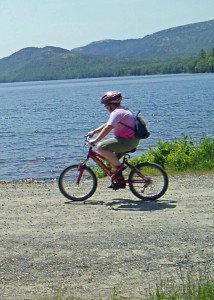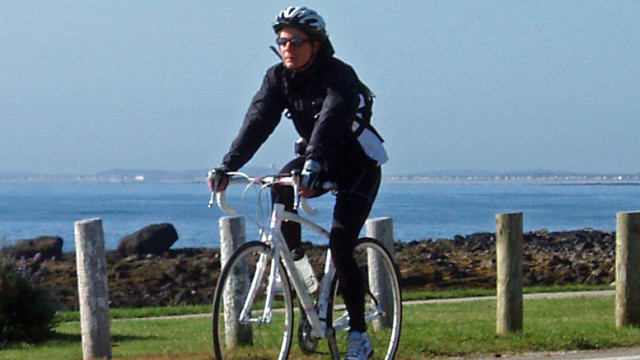
Quick Tip 1: Basic Fit For Better Bike Pedaling
The snowbanks have melted back from the pavement across most of the northeast, afternoons are getting warm and gas prices are heading up. It’s time to start pedaling again.
Like most of us, you probably learned to ride when you were a kid . . . or did you? There’s more to biking than balancing on two wheels and making the bike go forward. There’s pedaling, then there’s pedaling efficiently.
Pedaling efficiently lets you travel farther and faster with less effort and have more fun biking. The better you can bike, the more you’ll enjoy riding, the more places you’ll go by bike, reducing your carbon footprint and getting yourself in better shape. You and the world both win.
Start with a bike that fits you. Any local bike shop can help with this, and some are better than others. If you are really serious, there are bike fitting specialists out there who can tweak your ride to perfection.
But for recreational riders, the single most important dimension on a bike for efficient pedaling is the easiest to adjust: seat height. Many casual bikers pedal with the seat too low, which not only is inefficient, it also leaves you open to knee-stress injuries. Here’s the fix: adjust your seat so your leg is fully extended with your heel slightly down (about a half inch below level) at the bottom of the pedal stroke. You naturally pedal slightly toe-down, which prevents over-extending your knee.
This one change alone will make a huge difference Just make sure you aren’t rocking your hips side to side to reach the bottom pedal. They should remain perfectly level.
Quick Tip 2 : Use The Whole Pedal Stroke For Better Bike Pedaling

Once your seat is adjusted, you need to learn to pedal more efficiently. Just pushing down on the forward pedal works, is inefficient. You want to apply force over more of the pedal stroke. Not even the best Tour de France riders apply optimum force throughout the full arc of every pedal turn—but most casual riders can easily improve.
First, attach your foot to the pedals with clips or cages. This lets you apply force at three additional points of the pedal stroke: pull back at the bottom, lift up through the back of the stroke, and push forward in a strong transition over the top. This dramatically increases your pedaling efficiency.
The easiest way to learn this is to pedal with just one leg on flat ground. Focus on learning to pull back and lift up, and you’ll make huge gains. Pushing forward over the top and then down are more natural.”
When you again use both legs, you will find it easier to simultaneously pull back on the bottom pedal as you push forward on the top, and to lift the back leg as you push down with the forward. That’s pedaling in a perfect circle and it’s the most efficient way to propel your bike.
Pedal efficienttly and riding a bike will be more fun. You’ll go farther and faster on the flats, climb hills with less effort. Who knows, maybe you’ll find biking is your transportation of choice this summer.
Quick Tip 3: That Shifty Cadence For Better Bike Pedaling

Have you ever watched bikers pedaling up a steep hill? Some will keep pedaling just as fast and easily as they did on the flat—nothing changes except forward speed.
Other bikers will obviously strain, pedaling slower, pushing harder. They often end up walking up the hill, pushing the bike. Some of what you are seeing is conditioning. But some is inefficient use of the bike’s gears.
Learn to maintain a steady pedaling cadence. Ninety complete pedal strokes per minute is about right for most people, that’s three complete pedal rotations in the time it takes to count “one thousand one, one thousand two.”
Shifting properly is key to maintaining cadence. Start on a flat in an easy-to-pedal gear. Practice moving up and down through the gears at different speeds until shifting becomes second nature. Then take to gradually steeper and longer hills and try to anticipate changes so you shift up or down to comfortably maintain your pedaling cadence.
If you find your cadence slowing, shift to an easier gear. Pushing harder on the pedals to go uphill is like climbing stairs two at a time—you are lifting weight farther with each step, working harder, putting more strain on your knees.
If you feel like you are chasing your pedals, going too slow, or working too hard for nothing, shift to a harder gear.
Just right and you can pedal far and fast. The rapid, brief muscle contractions in a higher pedaling cadence actually help your heart push the blood through your body.
Even in the right gear for the slope, hills are a challenge. It’s natural to want to slow your cadence as you grind up a long or steep hill. Instead, find the gear that keeps you moving forward while spinning your pedals almost as fast as you did on the flats.


